I’m just going to say it: Young people intimidate me. Gen Z, in particular, makes me feel beyond uncool (she says, wearing her Kirkland Signature leggings). So when Jess proposed I talk to a Gen Z design content creator for a story, I was trying to sound excited but was, understandably, a bit daunted.
Two years shy of the big four-oh, I didn’t even know what I would ask someone in their 20s, but I’m a trained journalist, damnit, and it was time to polish off those J-school interview skills I went into student loan debt to acquire. “Take a look through his videos, and let me know if it’s something you think you want to tackle,” Jess suggested, maybe hearing the slight hesitation in my voice I was poorly trying to hide.
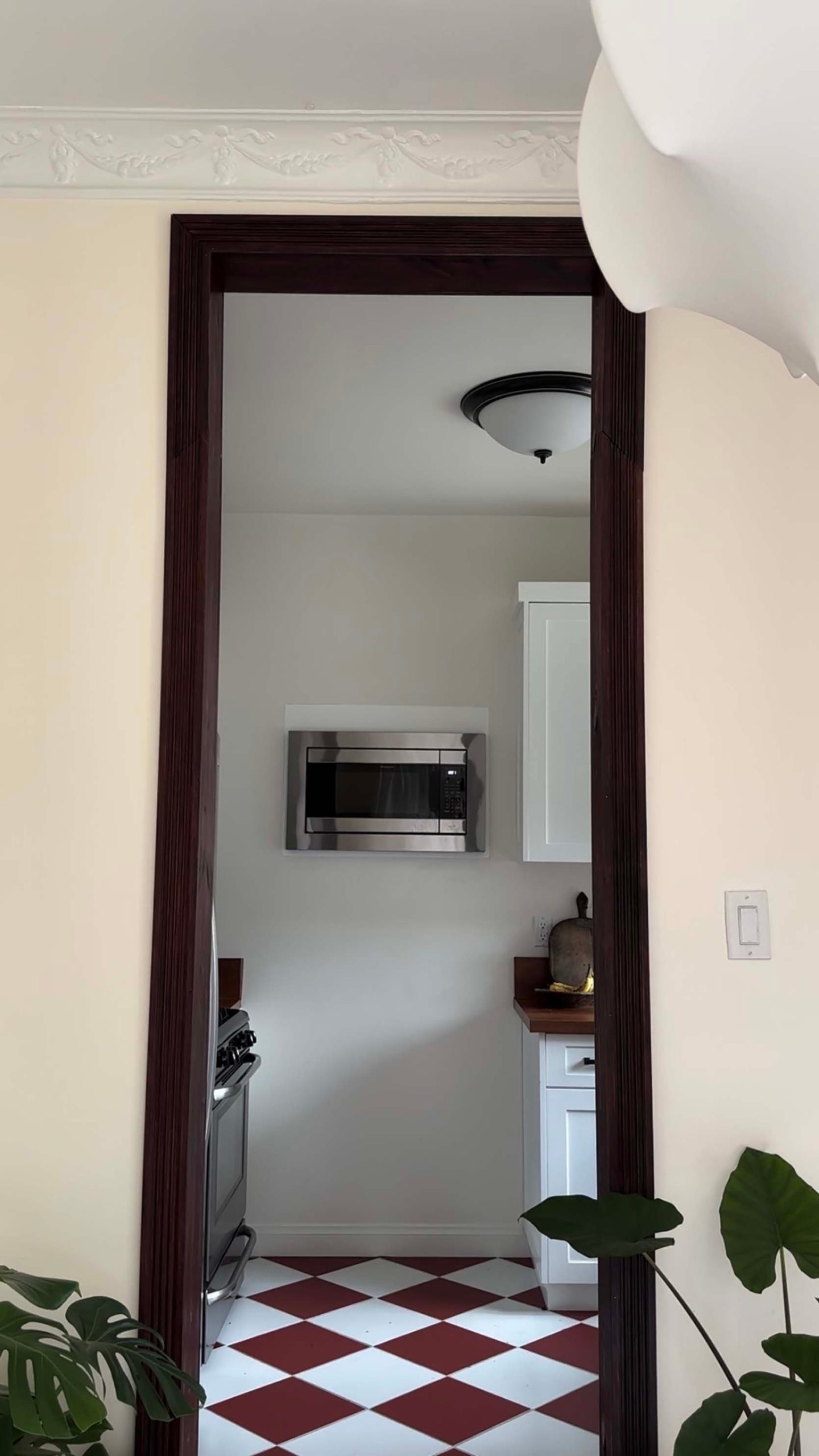

The creator in question is Marco Zamora, a 26-year-old here in Los Angeles who shares his love of design as well as his uber-chic rental DIYs on TikTok and Instagram. Upon first scroll, I recognized a project of his that Jess had shown me a while back—a retrofitted wood doorway frame with a handpainted stained glass transom. I recall thinking it was so charming and elevated but didn’t make the effort to go into my own phone and follow the brains and the brawn behind it. Then there is the modern kitchen that he took from perfectly nice (especially by rental kitchen standards in LA) to inviting and sweet in order to better match the 1920s Parisian aesthetic of his building. The video I was most taken with, however, was one in which he talked about “sad beige” decor and how he broke up with it in his own home by layering in his Mexican heritage instead of going the route of trendy decor that Pinterest and Instagram condition us all into thinking is “good” design.
Maybe this wouldn’t be so formidable. Maybe, in fact, it would be enlightening. Talking to the younger generation of design lovers; figuring out what makes them tick(tok), what they’re into, and where they think this is all headed. Besides, how was I ever going to figure out what he puts in that glorious head of floppy, shiny, voluminous hair?!?
Post-phone call, I immediately texted Jess: “Marco is a DOLL!”
Before our call, if I had to put into words what I thought Gen Z “design” was, I’m not sure I could summarize it with words. I’d be better off sharing a movie reel of what my mind envisioned: flashes of squiggle mirrors, plastic vines taped to walls, string lights, Oreo-cookie side tables (look them up), bright colors, and just a constant whiplash of flipping through trends that end in “-core”. Honestly, not too dissimilar to my own bedroom circa 1997. I know my assessment isn’t fair, especially for someone who spends very little time following anyone under the age of 30 in the design world, and (gasp) doesn’t even have TikTok downloaded on their phone. But it wouldn’t be the first time one generation looks down their nose at the one that follows, whether they are mean-spirited about it or it’s just par for the course.
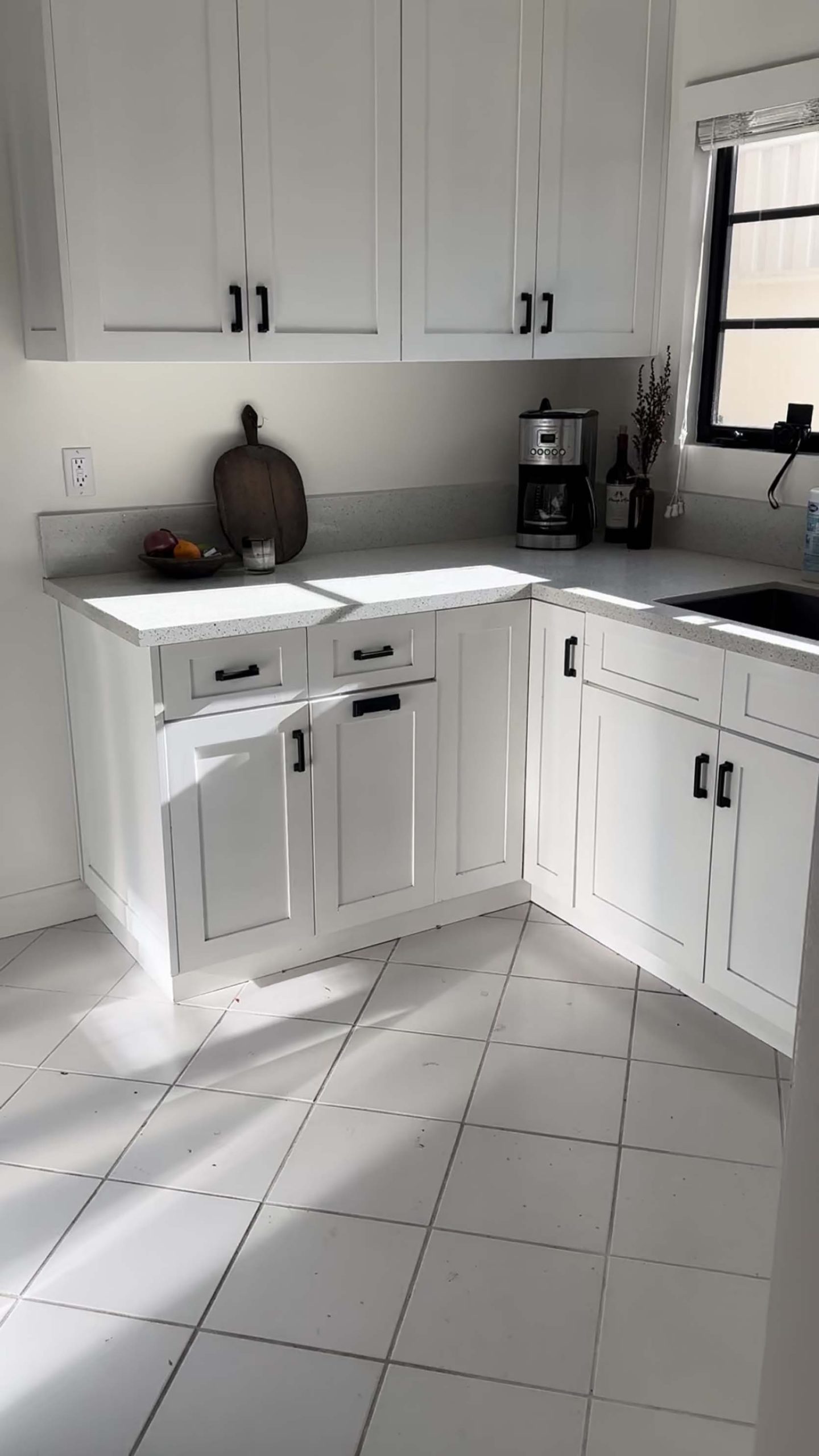
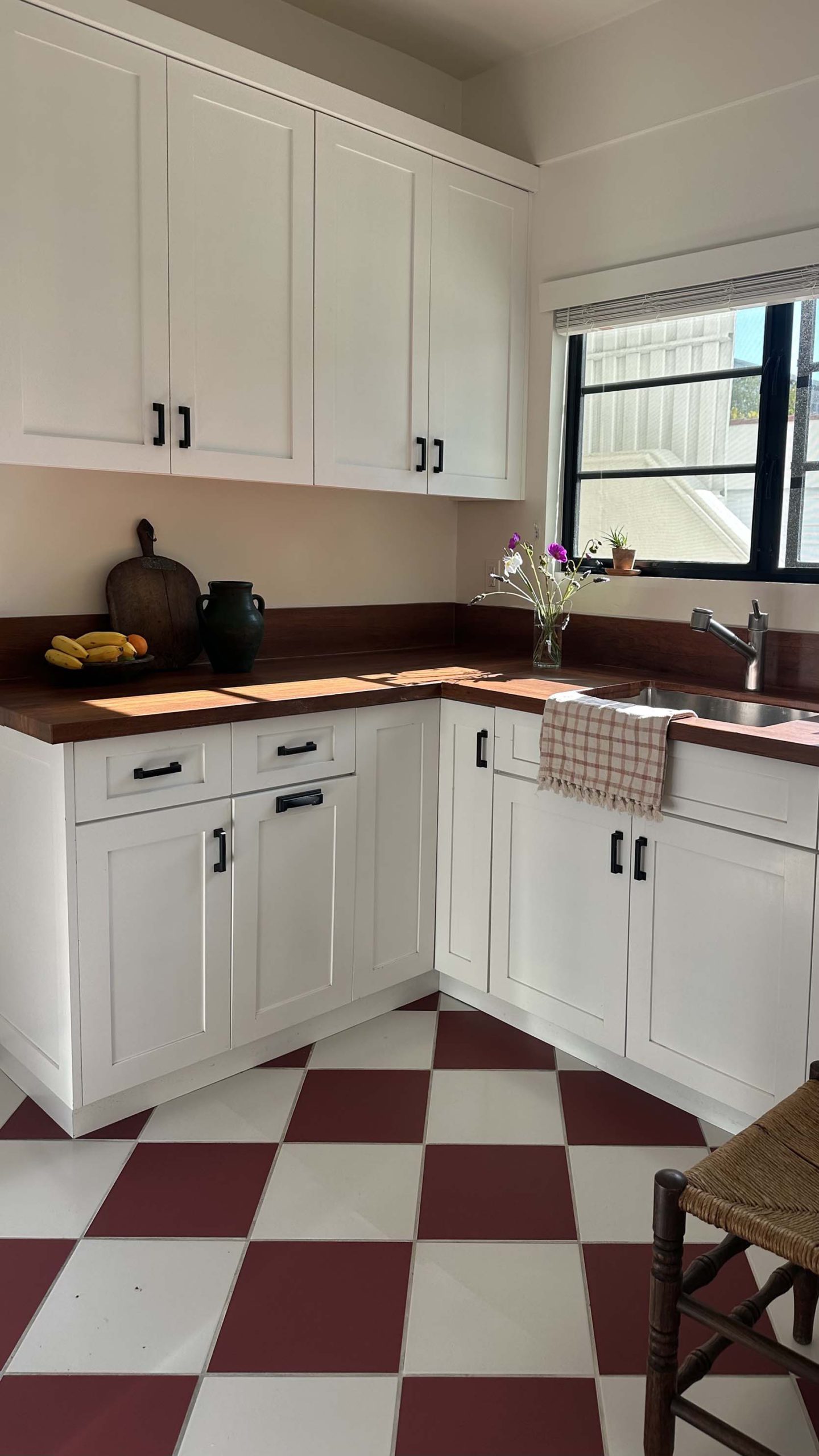
What was I scared of? My conversation with Marco instilled so much hope in me about Gen Z and beyond and inspired me in ways I wasn’t expecting, from why they do what they do to the care and the thought they put into their spaces. They seem leaps and bounds more mature than how I approached interiors when I was their age. I truly found myself pleasantly surprised as I sat and listened to Marco discuss his perspective on responsible design, on trends, and on access to inspiration.
So, what exactly did Marco share with me that made me flip my youth angst on its head? Let’s explore the most surprising takeaways…
[BUT WAIT: Marco and I spoke for nearly an hour about many things, including how he got to where he is. I edited down the conversation for the sake of brevity and readability but I don’t want to skip out on his impressive resume. Quick intro: Marco, 26, lives in LA. Wanted to be an architect his whole life, got into UC Berkeley but then switched directions after getting a full-ride scholarship to a school in Long Beach because he was his high school’s valedictorian; Long Beach didn’t have an architecture school so he studied civil engineering; graduated and got a coveted internship at Disney; moved on to work at Amazon; still didn’t feel like he was doing what he loved so after sharing his home on TikTok and people being drawn to his projects and aesthetic, he went full-time content creator. Phew! That was a lot, but *now* we’re ready get to it.]
Takeaway #1: Gen Z Puts Environmental Impact & Financial Responsibility First When Decorating
I’m leading the charge with the one learning that, honestly, was the most surprising to me, in the best way possible. Maybe it’s because my generation grew up recycling, sure, but the whole “reuse” part of the equation definitely wasn’t the star. I recall many times buying second-hand and most of my friends and peers just called it “used” and “old.” There was a subsect of vintage lovers I can recall, but it certainly wasn’t the norm. I can almost guarantee the majority of my generation wasn’t thinking of “environmental impact” as we filled our car trunks with flat-pack boxes from IKEA. I do not write this with pride; sadly, the opposite.
Also, keep in mind that I’m the same generation that would get lured into signing up for multiple credit cards on my college campus with the (incredibly predatory) trade of a cheap, size XXL T-shirt that said “College” on it (or the one time I got a new credit card just to get a free $7 Jimmy Johns sub…true story, and thank goodness this is now illegal). All that to say that financial literacy and responsibility were something you had to work hard to seek out. It wasn’t the standard to just know you were better off not opening up numerous lines of credit with no job.
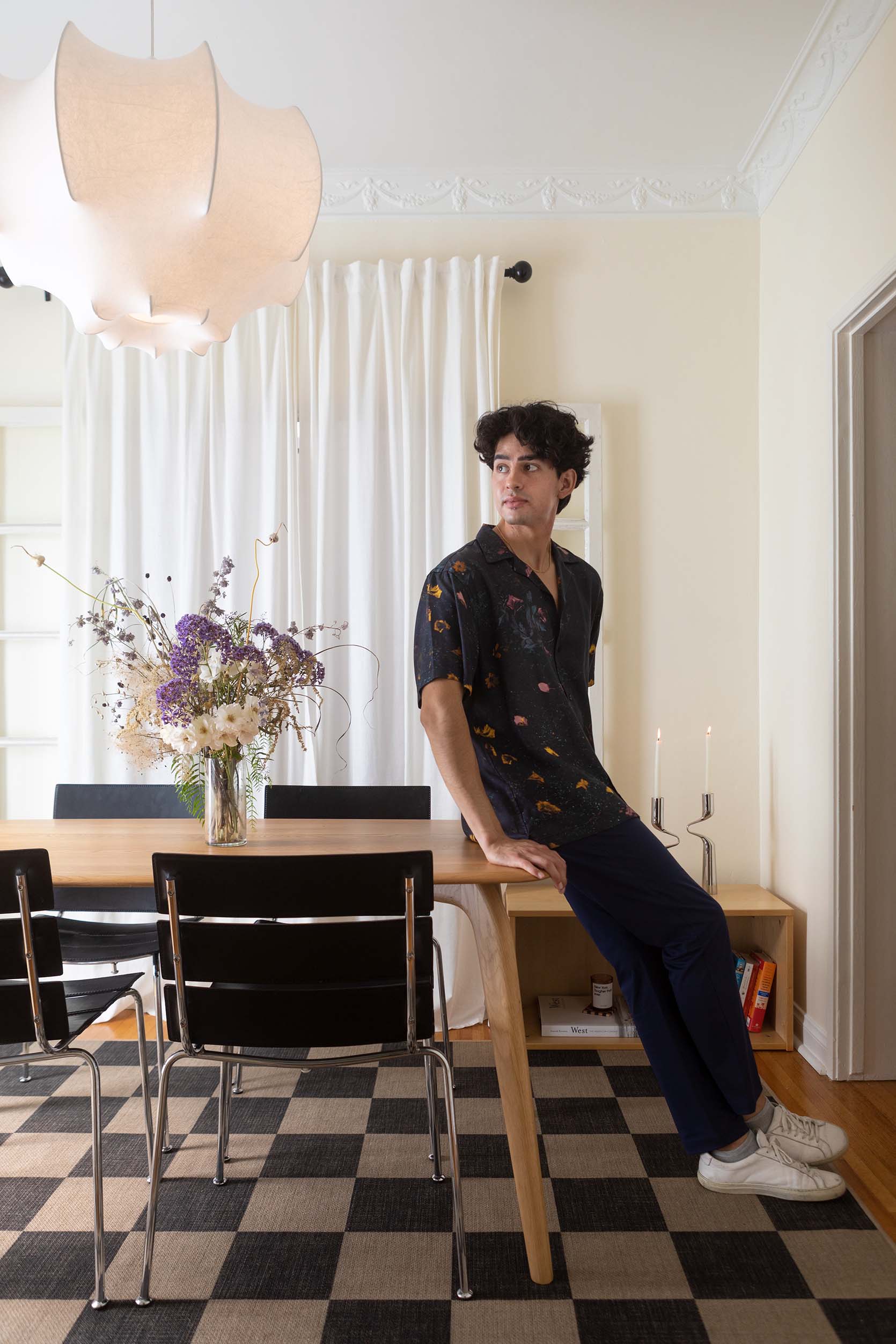
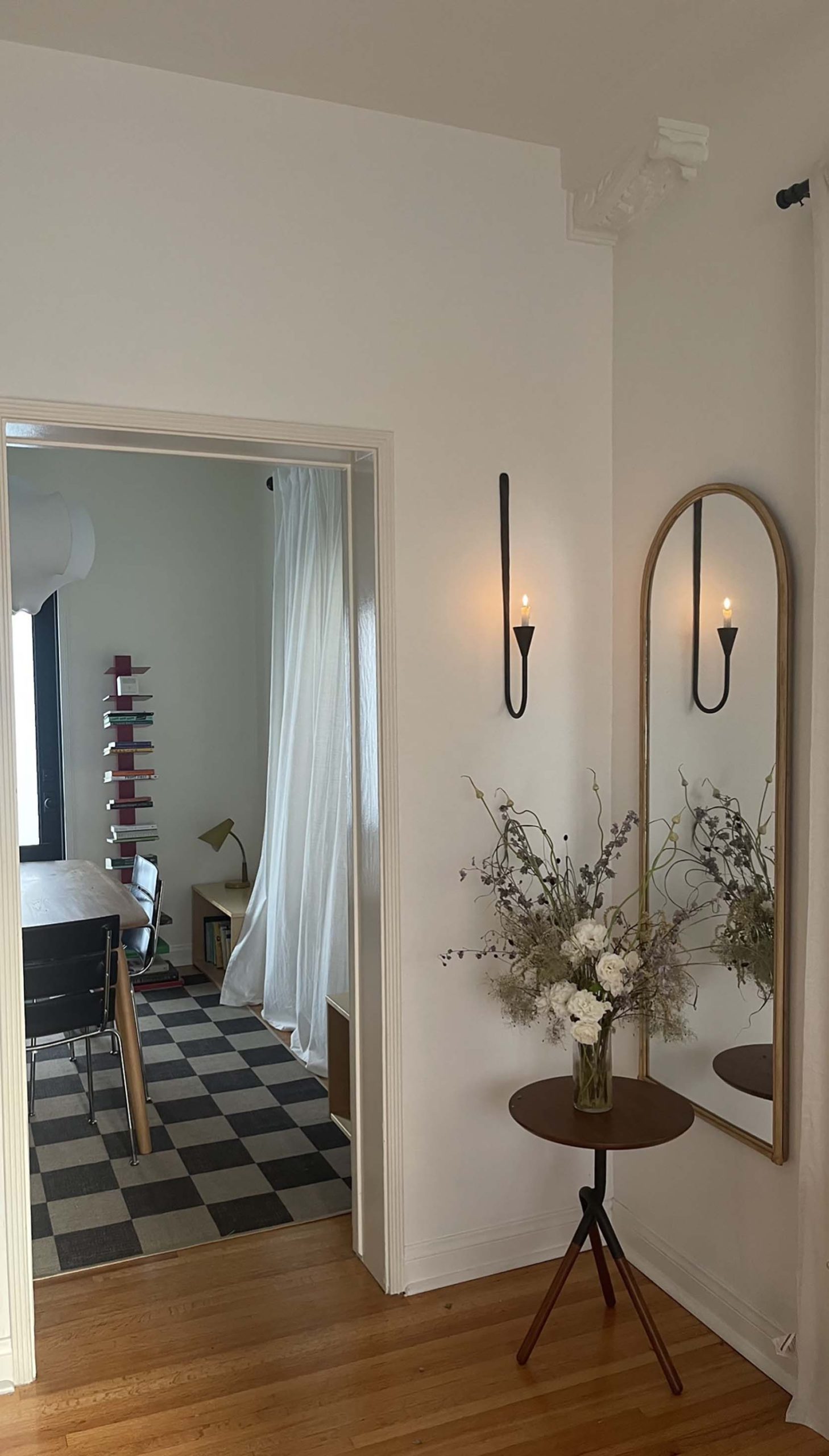
“I think my generation really just isn’t into ‘new’ things,” says Marco. “We’re more about thrifting and finding unique things with character. I think that’s a natural shift in the design world in general, though. I think within the last five years, there’s just so much overproduction of trendy items. Take white furniture, for instance. White couches, white chairs, white beds, so much bouclé, but I think that’s actually the opposite of where I see myself and people my age leaning towards now. We’re trying to understand what we’re buying, and what environmental impact it will have. If all your stuff is brand new, especially if all of it is one trend or one style, how much waste is going to be created when you decide to flip styles?”
“I have a white couch, but I thrifted it, and even when I bought that white couch, I had to think ‘Okay, if this gets dirty or scuffed beyond repair and I can’t resell it, what does that mean? Waste.’ I feel like that about a lot of home decor in general. There’s so much mass production, and you can look at something and just know that about it. You can tell there’s not much history in it. Just…generic. There’s a lot of beauty in thrifting and finding something that’s unique and has a story. I think that’s something my generation prides itself in and looks for.”

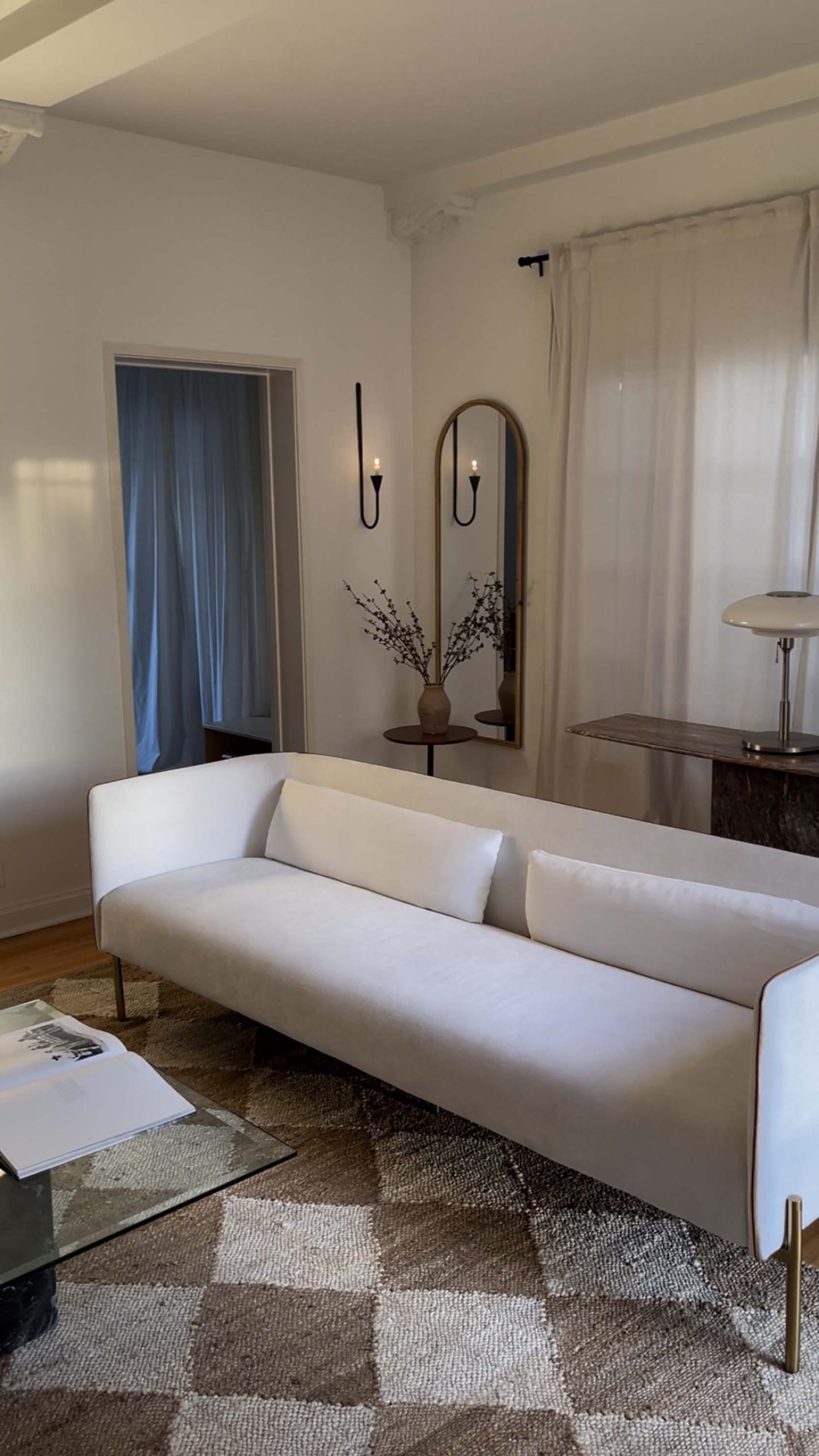
So does that mean Gen Z (or Marco) doesn’t ever buy anything new or shop at stores like IKEA and Target to grab a vase or tray? Not necessarily.
“Obviously, in a home, you’re going to need to buy some new things. But it’s about the mix and the balance. For me, I’m in an interesting place where I want to be able to provide recommendations that people can actually go and get. A lot of the time, if I find a very unique coffee table or stool, maybe it’s not something everyone can purchase or find. What I do try to do is find specific products at bigger box stores that are higher quality or have a more timeless design. I do like to meet in the middle. Nothing super trendy and ideally, well made. I try to collect good pieces that will hopefully have multiple lives and multiple homes. If for some reason something didn’t fit, I would find it a new home with someone else. But I think I like my pieces enough that they would work anywhere I go.”
Takeaway #2: They Actually Don’t Care How Their Homes Look On Social Media
Look, I know that this header is kind of contradictory to the idea that someone would share their home on the internet for a living, but when I asked Marco about the “why” behind what he does in his home, it felt like the thought of making his home beautiful *only* for the internet had never even crossed his mind. I don’t have to expand much on the truth that we all lived over the past 10-12 years: how to make your spaces “Instagram-worthy” or “Pinterest-worthy” consumed a tremendous percentage of both the number of articles circulating the web and what feels like the DNA make up of the Millenial age set. We were the first generation to really put our lives and our living rooms on a 24-hour feed to be consumed by everyone. But by now, those in Gen Z and younger don’t seem to have the same need to “fit in” and fake perfection that was so prevalent 10 years ago.
“I think at the end of the day, it’s a little bit of both. I think that’s true for all generations, really. You want a beautiful home for yourself but also you want other people to enjoy it with you. I wouldn’t necessarily say that it needs to be beautiful to show off on social media, per se, but inspiring others is always nice. My goal with the content I create is to make elevated design accessible to everyone. It’s not about being gimmicky or showing off, at all.”
Takeaway #3: Trends Don’t Matter. Experimentation Does.
Could have fooled me. Truly. Again, back to my original thoughts of Gen Z…I would have put money on the fact that they are ruled by trends, but in fact, that’s not the case. They’re the trend-setters, and if they are buying into a trend, it’s to get to the next, better, version of themselves. Deep.
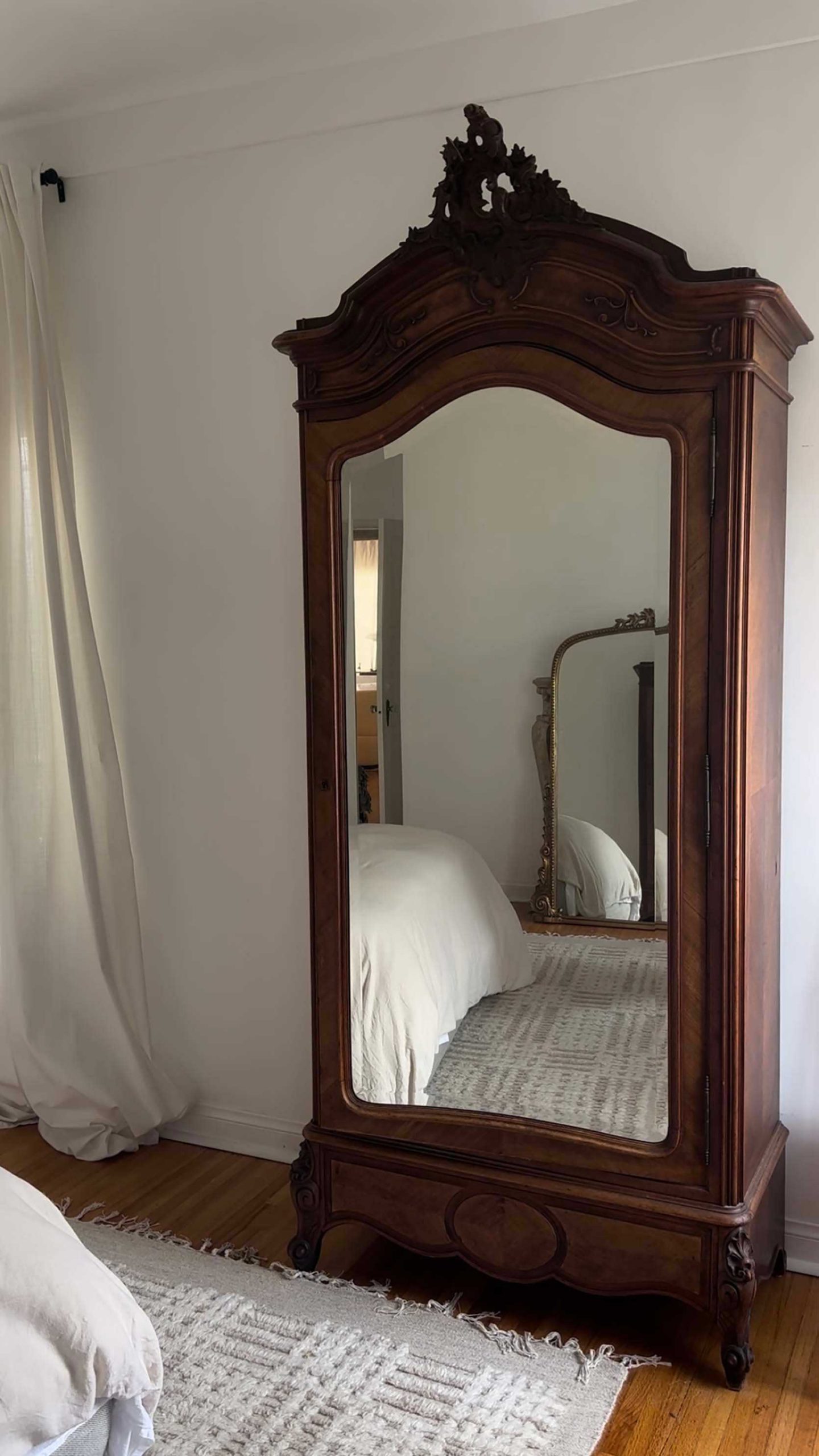


“There is a lot of negative energy around the word trend, but there are some positives, too, specifically experimenting and learning. When I first started decorating my own homes, I was very much about neutrals. My Pinterest boards were all very Wabi-Sabi, natural, and of course, that’s been on trend for a while now. My style has since evolved and will continue to evolve. That will only happen by experimenting. The key, however, is to dabble responsibly. Buy things that are vintage or used already that fit this new ‘trend’ you might be interested in trying. Trends tend to repeat, so you’ll probably find something that is already in rotation. Be smart about it financially. It’s really what a lot of us think about first. Secondly, being mindful of the environmental impact. As long as you have those two things in hand, trends are fine! It’s the wastefulness that’s a problem. Am I buying a $3,000 white couch or bed that I’m not going to love a year from now?”
Takeaway #4: They’re Not Afraid to Be Uniquely Them…Even If No One Else Is Doing What They Are
It’s no secret that Gen Z kind of goes their own way. That’s just the nature of every generation that comes after us, though, right? They learn from the ones before them and repave the path to better suit themselves. In terms of design, it certainly didn’t hurt that there is seemingly unending access to inspiration and resources now that just weren’t available before.
When I was in my early 20s, Pinterest and Instagram weren’t a thing. The only options for second-hand or vintage were local shops, Craigslist and eBay. If your city didn’t have good options, off to HomeGoods or Z Gallery or West Elm you went. As far as inspiration, if I wanted design ideas, I could either buy a magazine, scroll through some Tumblrs, or see what a blogger I followed was up to. But even then, you didn’t quite know what to do with what you saw. So…we mirrored the photos we could find in our homes. We wanted to recreate the Emily Henderson look, for instance, or buy everything Nate Berkus designed for Target to feel like he styled our spaces. I’m not saying no one had an original room, of course we did, but the spirit behind it feels different.

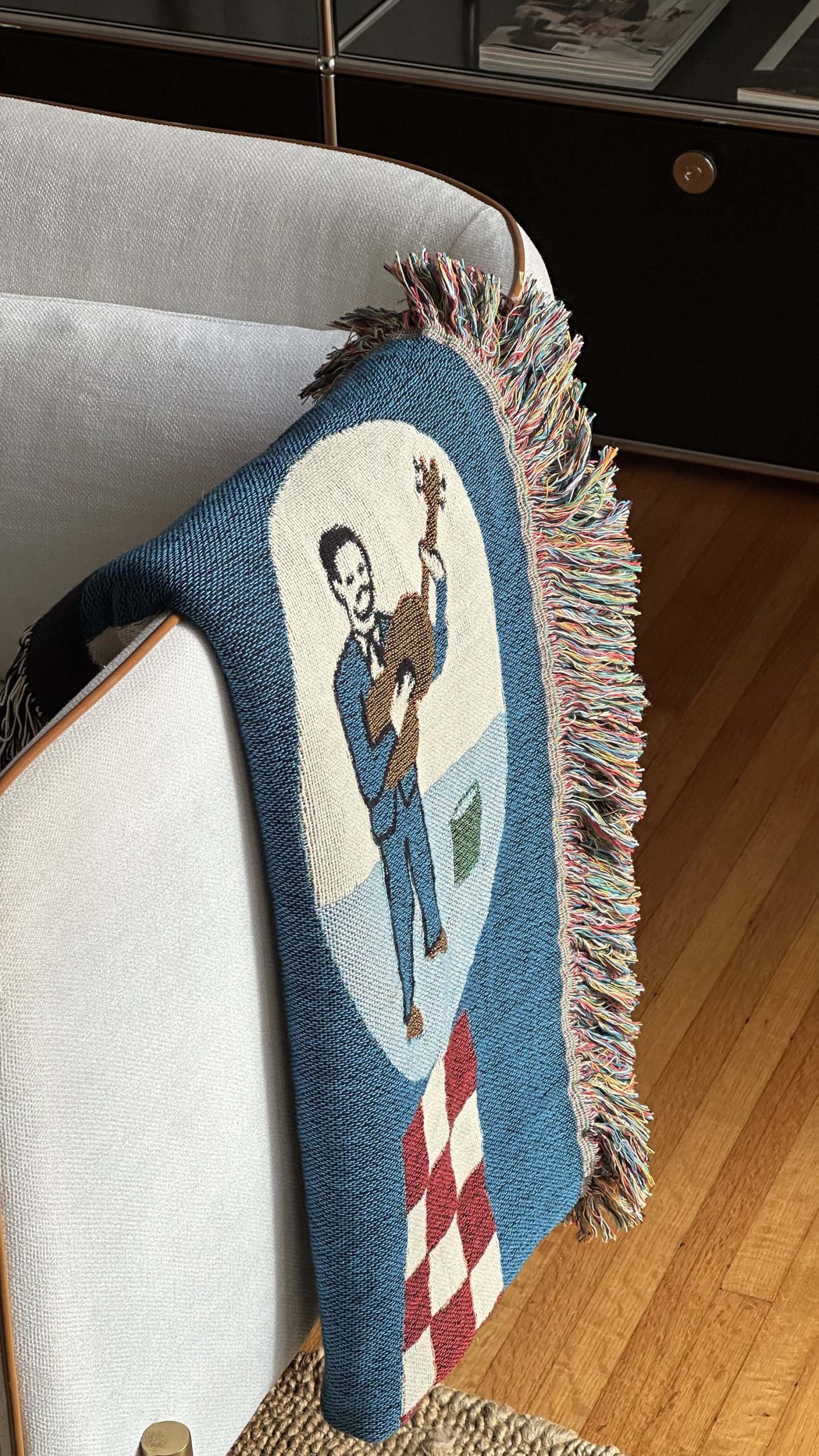
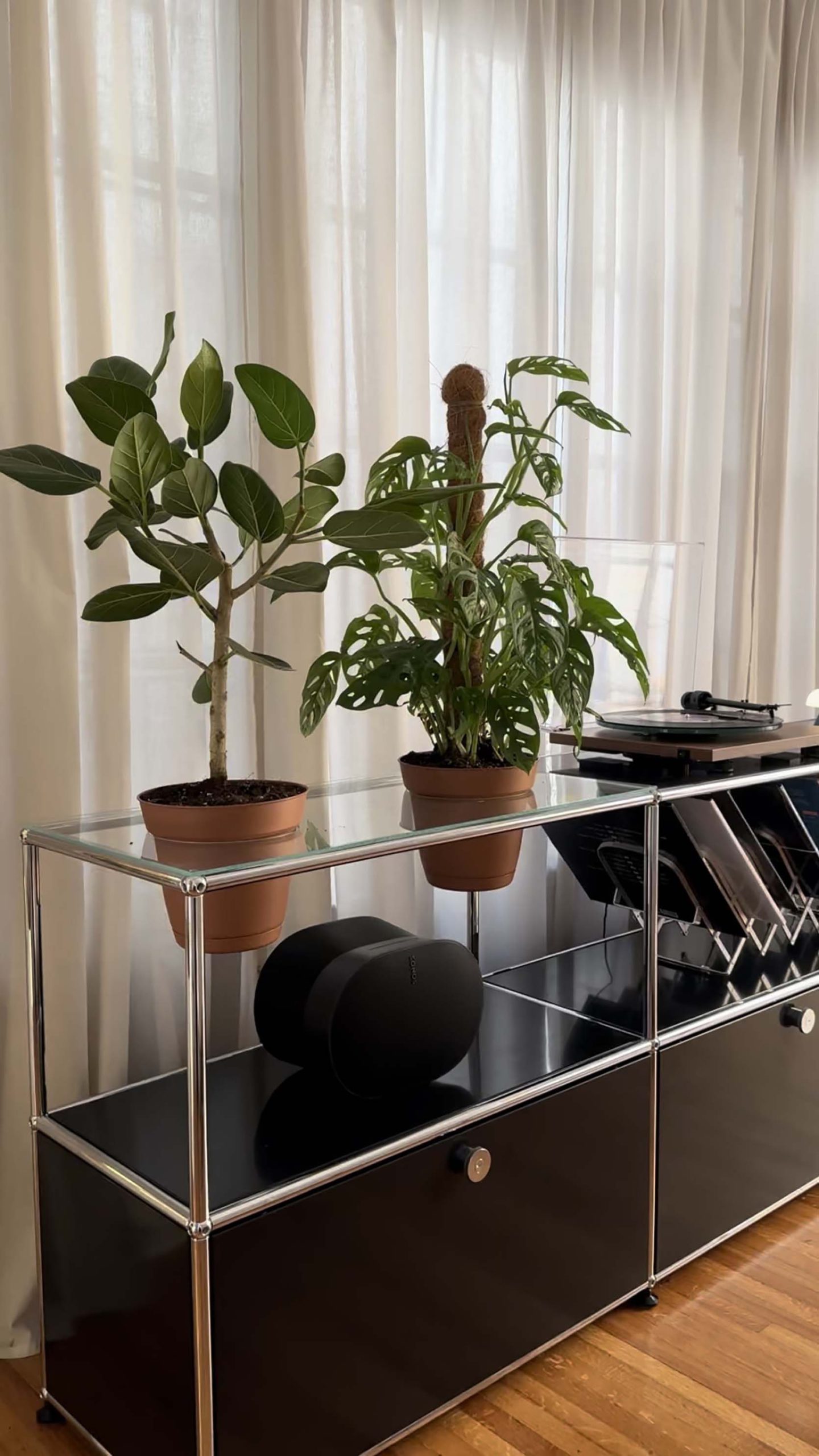
“Over the last few years, as I lived in apartments with roommates, I would just go to Target and HomeGoods to buy little decor pieces since I didn’t have free reign of the whole space, and honestly, it just didn’t really do anything for me. It always felt a little generic. It took me some time to learn to incorporate my Latin background into my designs because it’s important for me to make things my own. The internet is a beautiful place and it has helped me to learn so much. You get to see so much inspiration and different ideas all within your phone and it opens you up. You’re able to put it together in a way that’s very specific to you. Plus, we have so many resources now with resale markets like Facebook Marketplace, Kaiyo, and numerous online auctions that allow us to pull from across the country and the world. There’s a lot more to experiment with in unique ways. It lets you get so creative. Add your own twist and make it yours.”
“Recently, I took a trip to Mexico City and it changed my perspective on design. I visited Casa Luis Barragán which is one of architect Luis Barragán’s most famous projects. He had such a good understanding of how to incorporate color and Mexican culture in an elevated way. Being surrounded by my heritage and just seeing how beautifully it was all executed really motivated me to want to bring that into my home. I bought a lot of special mementos that remind me of Mexico and my culture.”
Takeaway #5: They Don’t Think Millennials Are a Bunch of Lame Losers
Side parts vs. middle parts; skinny jeans vs. straight leg. Everywhere you look, there’s some annoying comparison of how everything us “old” people are doing is passé and all those younger, cooler people are not-so-secretly laughing at us. But…from the sounds of Marco’s answer when I asked him about this, Gen Z is far more accepting and welcoming than I originally gave them credit for.
“Design comes in waves. We also come in waves. So much is just dependent on what your inspiration and influencers were and where they came from. I don’t think that there’s anything ‘wrong’ with the older generation of content creators. That’s Emily’s style and this is my style. That’s important to understand in the design world. Sometimes, people think there’s a right and a wrong, but there really isn’t. Everyone is doing their own thing, and at the end of the day, that’s why it’s so great to experiment. You may love a very neutral space and there’s nothing wrong with that. But where we’re at right now, and why I think I’m trying to push the message of adding color and character and personality, is because we’ve been in this neutral design space over the last 10 years. Neutrals have been pushed so heavily as the “safe” option. When in reality, that isn’t the case.”
Final Thoughts
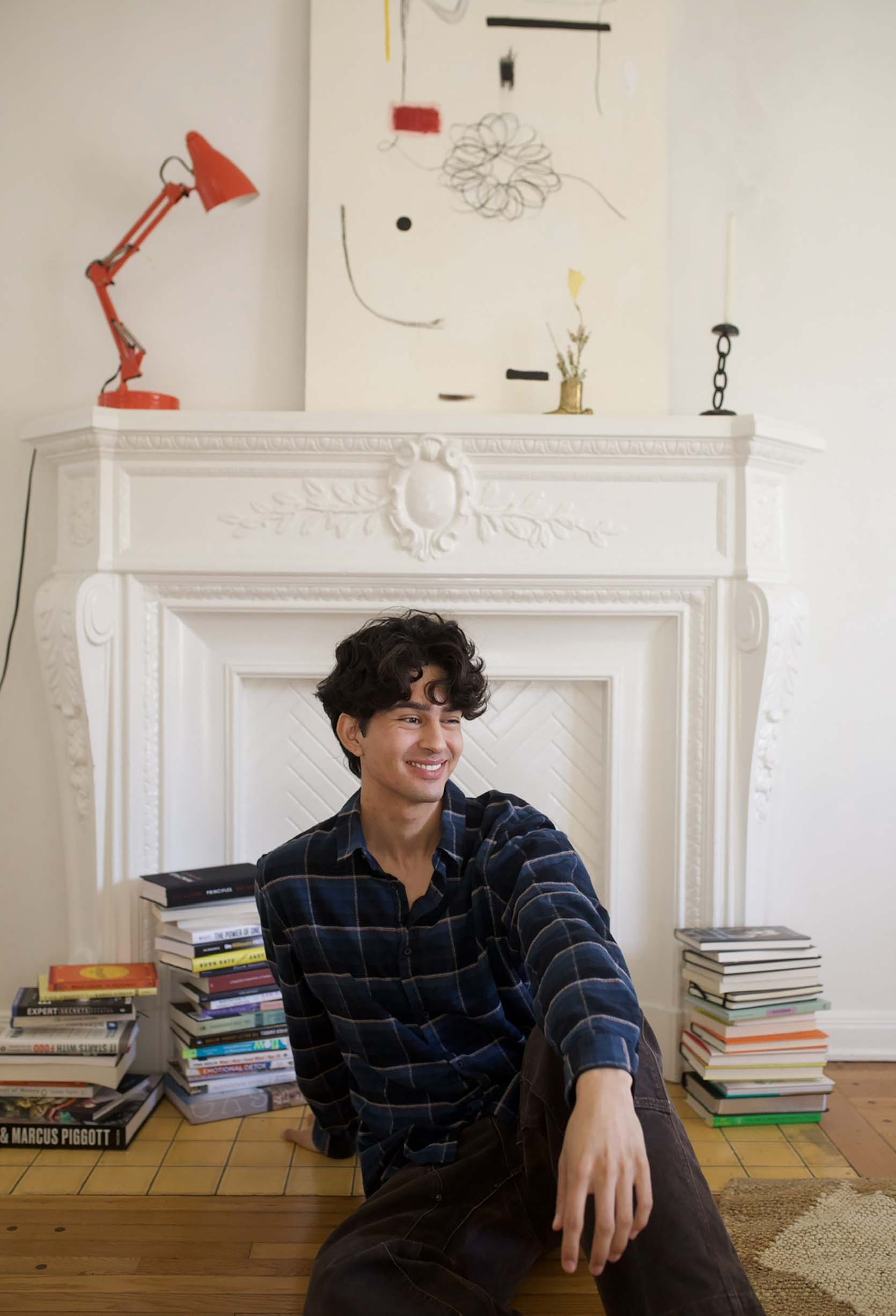
again, the hair in top form
Maybe Marco is a special unicorn in his generation, but the way he discussed not just himself but Gen Z when prompted felt like that’s not the case. He spoke about design and decorating with such ease and confidence that I hardly ever saw when I was his age (and I worked in a high-design magazine at the time, too). Personally, I think so much of it boils down to access and education. As much as we all can look down on social media and blame it for the pitfalls of society, what it has given us all—and particularly young folk—is visibility into all the options that exist to either tweak and make their own or completely reinvent the wheel.
Oh, and as for the hair. Yes, I did ask him about it because HELLO, but sadly, there was no resolute elixir that would turn us all into floppy hair gods. “It’s good genes! Honestly, my products are constantly in rotation. I don’t have much loyalty to specific products, but right now, I’m using the brand Kevin Murphy.” You win some, you lose some (she says, as she Googles Kevin Murphy…).
*all images courtesy Marco Zamora
THIS POST WAS ORIGINALLY PUBLISHED HERE.


